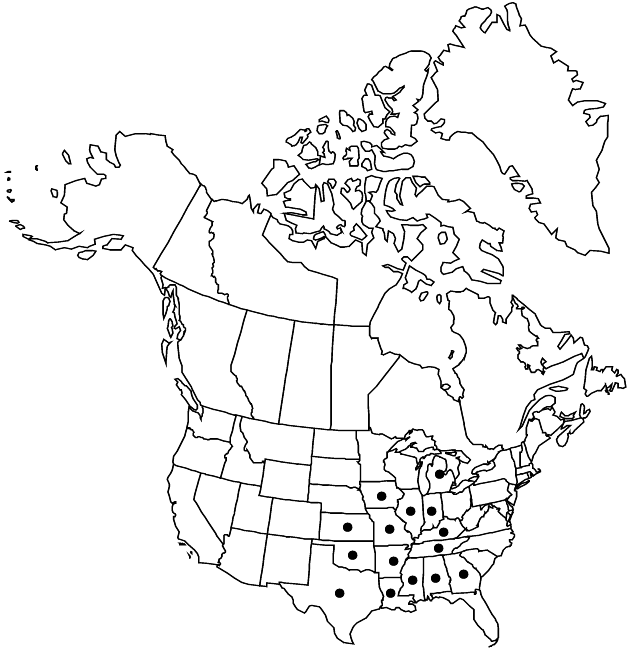Vernonia missurica
Herb. Raf., 28. 1833.
Plants 6–12(–20+) dm. Stems puberulent. Leaves mostly cauline; blades elliptic to lance-ovate or lanceolate, 6–16(–20+) cm × 18–48+ mm, l/w = 2.5–4(–6+), abaxially usually puberulent to tomentose or pannose (hairs ± erect, ± curled), seldom glabrate, resin-gland-dotted, adaxially scabrellous, glabrescent, not resin-gland-dotted. Heads in corymbiform-scorpioid arrays. Peduncles 3–35 mm. Involucres broadly campanulate to urceolate, (6–)7–10+ × 5–9+ mm. Phyllaries 50–70+ in 6–7 series, sparsely scabrellous, glabrescent (seldom resin-gland-dotted), margins ciliolate, the outer lanceolate, 1–2 mm, inner linear-oblong to oblong, 6–7(–9+) mm, tips acute or rounded-apiculate. Florets 30–55+. Cypselae 3.5–4; pappi stramineous to whitish, outer scales 25–30, 0.5–1.1 mm, contrasting with 35–40+, 6–8+ mm inner bristles. 2n = 34.
Phenology: Flowering Jul–Sep.
Habitat: Prairies, loamy to sandy soils
Elevation: 30–200 m
Distribution

Ala., Ark., Ga., Ill., Ind., Iowa, Kans., Ky., La., Mich., Miss., Mo., Okla., Tenn., Tex.
Discussion
Selected References
None.